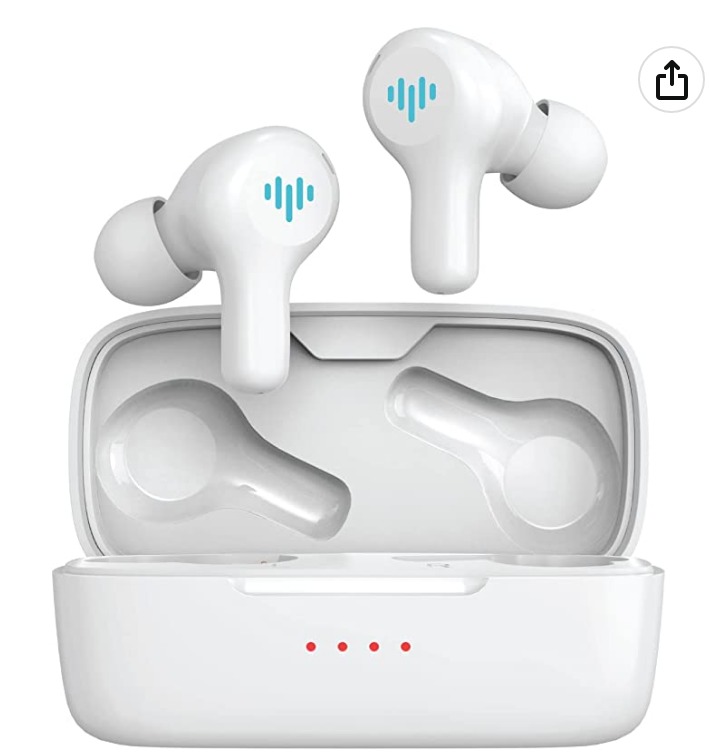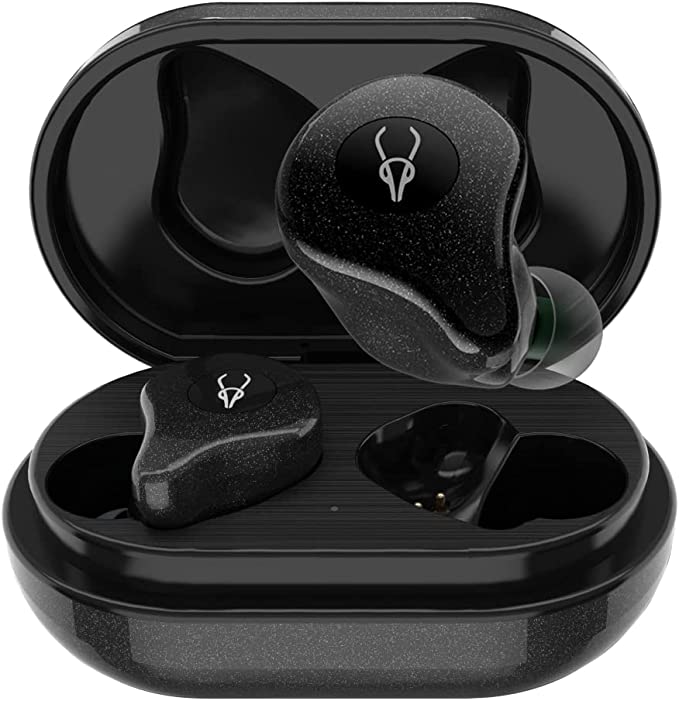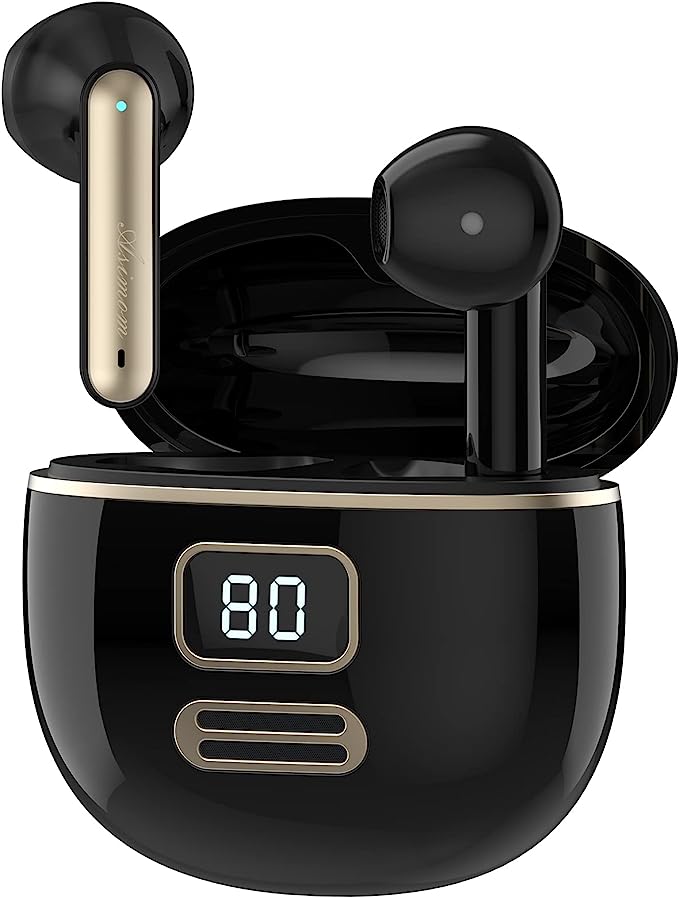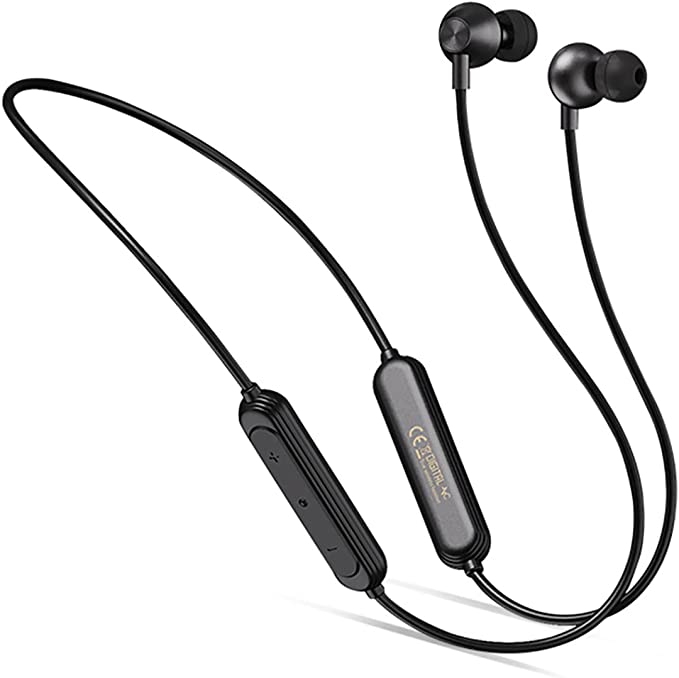Litwlds Y41 Wireless Earbuds: Superb Sound Quality Meets Affordability
Update on June 21, 2025, 8:06 a.m.
In our constantly connected world, the quest for the perfect personal audio experience has led us down a fascinating path of technological innovation. We crave rich sound, crystal-clear conversations, and the liberating convenience of wirelessness. Today, we’re not just looking at a pair of earbuds; we’re using the litwlds Y41 Wireless Earbuds as a lens to explore the remarkable science packed into these tiny titans of sound. So, let’s peel back the layers and discover the engineering magic that aims to deliver your daily soundtrack and keep you connected, all without breaking the bank.

Cutting the Cord: The Enduring Magic of Bluetooth
The very first marvel to appreciate is the “Wireless Bluetooth” capability. Imagine a world just a couple of decades ago, tethered by a spaghetti of wires. Bluetooth, born from a vision for short-range wireless communication, changed everything. Think of it as a tiny, invisible radio station operating in the 2.4 GHz Industrial, Scientific, and Medical (ISM) radio band – the same busy neighborhood your Wi-Fi often inhabits. These radio waves carry your music, podcasts, or call audio from your phone to the Y41 earbuds, data packets “flying” through the air.
Over the years, Bluetooth has evolved significantly. While the Y41’s specific version isn’t listed in the product data, it’s good to know that advancements (from early versions to standards like Bluetooth 4.x and the more recent 5.x series) have brought improvements in data transfer speed, connection stability, range, and, crucially for battery-powered devices, power efficiency.
But how does your digital music file actually become sound waves via Bluetooth? This is where audio codecs come in. Codecs are essentially “compressor-decompressors” or “coder-decoders.” Your phone “codes” the digital audio into a format suitable for Bluetooth transmission, and the earbuds “decode” it back into an audio signal. The most basic codec is SBC (Subband Codec), which all Bluetooth audio devices must support. Many devices, especially those catering to Apple users, also support AAC (Advanced Audio Coding), which can offer better sound quality at similar bitrates. Other codecs like Qualcomm’s aptX family aim for even higher fidelity or lower latency, though support varies by device. Understanding codecs helps appreciate that not all Bluetooth audio is created equal.

Conversations in the Clear: Demystifying ENC and the Power of Four Microphones
One of the most touted features of the litwlds Y41 is its “Noise Cancelling ENC Clear Call Ear Buds with 4 Mic.” In a bustling coffee shop or a windy street, making a clear phone call can be a challenge. This is where Environmental Noise Cancellation (ENC) steps in. It’s important to distinguish ENC from its cousin, Active Noise Cancellation (ANC). While ANC is designed to create an oasis of quiet for your listening pleasure by actively countering external sounds reaching your ears, ENC focuses on cleaning up the audio you transmit. Its goal is to make sure the person on the other end of the call hears your voice, not the cacophony around you.
The “4 Mic” part is key to how the Y41 tackles this. Modern ENC systems often employ a technique called beamforming. Imagine each microphone as an “ear.” By strategically placing multiple microphones and using sophisticated signal processing algorithms, the earbuds can create a “beam” or a focused listening zone pointing towards your mouth. Sounds originating from outside this beam – like traffic, chatter, or keyboard clicks – are identified as noise. The system then works to reduce these unwanted sounds in the signal sent to your caller. It’s a bit like a highly skilled sound engineer in miniature, isolating your voice from the background orchestra of daily life. This multi-microphone approach is far more effective than a single microphone at distinguishing your speech from environmental din.

An Orchestra in Each Ear: The Intricacies of Four Dynamic Drivers
Now, let’s talk about what actually produces the sound you hear: the “4 Dynamic Drivers.” A dynamic driver is the most common type of transducer found in headphones and earbuds, a tiny marvel of electromechanical engineering. At its heart is a diaphragm (a thin, flexible membrane), a voice coil (a coil of fine wire attached to the diaphragm), and a magnet. When an electrical audio signal from your music source flows through the voice coil, it creates a fluctuating magnetic field that interacts with the permanent magnet. This interaction causes the voice coil and the attached diaphragm to vibrate rapidly back and forth, pushing air and creating the sound waves that travel to your eardrums.
So, why four of them in each Y41 earbud? The idea behind multi-driver systems is acoustic specialization, much like a symphony orchestra has different instruments for different parts of the musical range. In theory, by using multiple drivers, designers can assign specific frequency ranges to each. For example, a larger driver might be optimized for reproducing deep, resonant bass frequencies, while smaller, more agile drivers could handle the delicate midrange (where vocals and many instruments reside) and the crisp high frequencies (like cymbals or hi-hats). This division of labor can potentially lead to a sound that is clearer, more detailed, and has better separation between different musical elements, as each driver operates within its ideal performance window.
However, cramming multiple drivers into a tiny earbud and making them sing in harmony is both a science and an art. The quality of the individual drivers is paramount, but equally crucial is the “crossover” network – an electronic circuit that splits the audio signal and directs the correct frequencies to the appropriate driver. And then there’s “tuning” – the meticulous process of adjusting how these drivers work together to achieve a desired sound signature. It’s a complex balancing act to ensure that all these elements combine to produce a cohesive and enjoyable listening experience rather than a muddled one.

Braving the Elements: Understanding “Waterproof” in Your Earbuds
The litwlds Y41 are described as “Waterproof Wireless Earbuds.” When it comes to electronics, “waterproof” isn’t an absolute term but is typically defined by an Ingress Protection (IP) rating. This standardized system, often seen as “IPXY” (where X refers to dust protection and Y to water protection), gives a more precise indication of an item’s resilience. For example, an IPX4 rating means the device is protected against splashing water from any direction – good for handling sweat during a workout or light rain. A higher rating, like IPX7, indicates protection against temporary immersion in water (up to 1 meter for 30 minutes).
While the Y41’s specific IPX rating isn’t provided in the product information, the claim of being “waterproof” suggests they are designed to withstand at least some exposure to moisture. This is a practical feature, especially for users who are active or live in climates with unpredictable weather. Understanding the general principle of IP ratings helps set realistic expectations for how much water your gadgets can handle. It’s always wise to treat “waterproof” claims with a degree of care – they are not usually an invitation for a swim unless a very high IP rating (like IPX8 suitable for continuous immersion) is specified.
A Tap and a Tune: The Simplicity of Touch Controls
Interacting with our devices has become increasingly seamless, and the “Touch Control Earphones” aspect of the Y41 reflects this trend. Instead of fumbling for tiny physical buttons, touch controls typically rely on capacitive sensing. Your skin is naturally conductive. When your fingertip touches a designated area on the earbud, it changes the local electrostatic field on that surface. A sensor detects this change and translates it into a command – a tap for play/pause, a double-tap to skip a track, or a long press to activate a voice assistant. This allows for a sleeker design and, for many, a more intuitive way to manage music playback and calls without constantly reaching for their phone.
Beyond the Specs: The Sum of the Parts
It’s not just about individual technologies, but how they come together. The provided draft mentioned the Y41 earbuds weighing just 4 grams each and including three sizes of ear tips. These ergonomic considerations are vital. A lightweight design enhances comfort for long listening sessions, and a proper ear tip fit is crucial not only for comfort but also for creating a good seal. This seal helps with passive noise isolation (physically blocking out some external sound) and ensures that the drivers can deliver their best sound, especially in the bass frequencies.
The Litwlds brand itself, noted in the draft as founded in 2022 and based in China, is part of a broader global trend where advanced consumer electronics technologies are becoming more accessible at competitive price points. Features that were once a hallmark of premium devices are increasingly finding their way into more affordable products.

Hearing is Believing, Understanding is Empowering
The litwlds Y41 wireless earbuds, with their advertised ENC clear call capabilities, four dynamic drivers, Bluetooth connectivity, waterproof design, and touch controls, offer a compelling glimpse into the sophisticated technology that underpins our modern audio experiences. For a listed price of $36.99, they aim to deliver a feature set that addresses key user needs for clarity, sound quality, and convenience.
Ultimately, understanding the science behind these features does more than satisfy curiosity. It empowers us. When you know what ENC means, or how multiple drivers can enhance sound, or what “waterproof” truly implies, you’re better equipped to evaluate products, set realistic expectations, and appreciate the intricate engineering that goes into crafting your personal soundscape. As audio technology continues its relentless march forward, a little bit of scientific literacy can make your listening journey all the more rewarding.



































